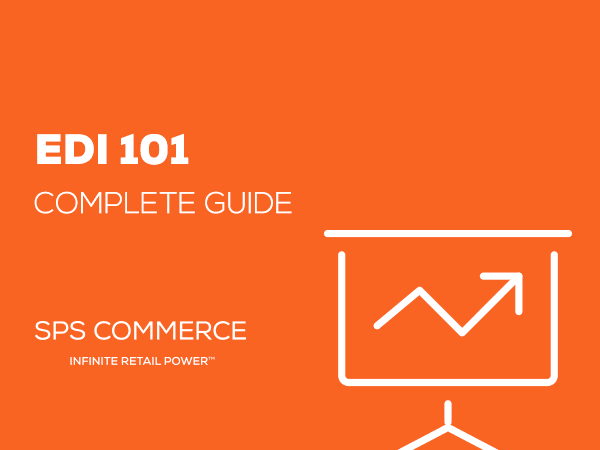EDI: The essential first step to better trading partner relationships.
What is EDI?
EDI is an abbreviation for Electronic Data Interchange. EDI is defined as “an interactive electronic system that enables a supplier and a customer to communicate easily.”[1]
Transforming supply chain communication
New technologies and communication methods have reinvented how we collaborate with business contacts across town and around the globe. The supply chain is no different. Seamless communication with trading partners can make the difference between a lost sale and a long-term business partnership. Though often overlooked, the supply chain is an increasingly important strategic asset that can predict the health of an organization’s bottom line and growth opportunities. The supply chain’s contribution to revenue increased from 4% in 2011 to 8.5% in 2012[2]. As the undeniable impact of supply chain performance grows, trading partners must prepare to take advantage of this valuable opportunity.
EDI: Creating a stronger supply chain
When retailers, suppliers and other trading partners need to strengthen their supply chain and ensure long-term profitability, harnessing the power of an electronic data interchange (EDI) is the essential first step. Fax and standard mail have become obsolete with the optimization of EDI tools. This technology has reinvented trading partner communication and the speed of doing business. Purchase orders, invoices and other documents that once took weeks to process are now created and delivered within hours.
Benefits of EDI
The benefits of EDI systems are real, and organizations are getting on board. EDI is proven to streamline and improve workflow while enhancing supply chain predictability. Trading partners are using EDI to:
- Reduce inventory
- Make more accurate forecasts
- Respond quickly to the disruptions that damage sales and relationships
- Free up valuable office resources to focus on more important business functions
Cloud-based EDI
A cloud system provides trading partners with the most cost-effective, user-friendly EDI solution. Instead of installing and maintaining an in-house system, an outsourced approach allows users to access trading partner communication tools from any Internet-enabled workstation, without the need for internal resources and costly ongoing maintenance and upgrades.
Learn the top five reasons to outsource your EDI
Download 7-point EDI change checklist
Proven savings with cloud-based EDI
A cloud-based EDI solution isn’t just more user-friendly than an on-premise solution—it also delivers proven cost savings to trading partners:
- EDI is cheaper than traditional paper methods: A paper-based order can cost $70 or more per transaction, while the more efficient electronic transactions are processed for less than a dollar.
- It frees up internal resources: With cloud EDI, the burden of EDI management is handled by a team of specialists who handle upgrades and maintenance without the involvement of your IT resources.
- It eliminates hidden costs of EDI: When compared to packaged EDI software, a cloud-based solution saves an average of 25–75% in upfront costs, plus 50–75% in long-term expenses like software updates and hardware upgrades.
Learn more about the common EDI transactions you can use to collaborate more effectively with trading partners. [1] Collins English Dictionary – Complete & Unabridged 2012 Digital Edition [2] 2012 CSC Global Survey

